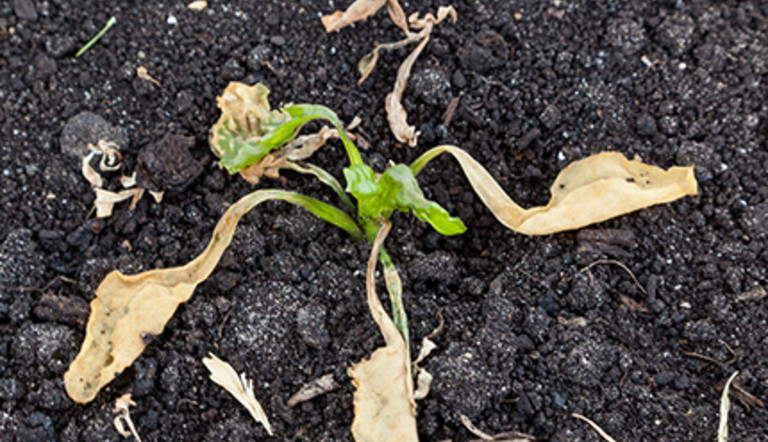
To re-drill or not to re-drill

Late frosts can severely damage emerging sugar beet crops, forcing growers to decide whether to undertake a costly re-drilling exercise or accept a reduction in yield. Adama crop manager Olaf van Campen considers the options
Even when the beet crop is drilled in warm, spring weather, night-time temperatures can fall to below 0°c throughout April and into May. When this happens the frost causes moisture inside the emerging plant to freeze, rupturing cell walls and causing extensive damage. At the same time groundwater may also freeze, depriving the plant roots of moisture and adding to the number of plants that die off.
The morning after a frost, the plants’ leaves wilt and turn black, dying back to the heart. However, although the damage can look extreme, it is best to wait for two to three days before making a decision on whether to re-drill.
It is also vital to avoid making any herbicide applications to the crop when it is in this state because affected plants will be extremely sensitive to the active ingredient and further losses will occur. Once the three days have passed a more accurate damage assessment can be made.
If there are signs of new green growth the beet plants will recover and there should only be a small yield reduction. But where there is no apparent leaf growth after three days, the plant is dead. It is then necessary to work out how many plants have survived across the field and whether to re-drill.
Before any decisions are made, potential yield loss must first be set against the cost of reseeding which on average is between €250 and €350 per hectare.
The date of the frost damage should also be taken into account, because the re-drilled crop will have a shorter growing season and individual beet will not grow as large, limiting the overall yield potential.
It is, therefore, a case of assessing whether the initial frost-damaged crop, with fewer plants remaining, will produce the greater yield or whether a later-drilled crop with a shorter growing season but higher plant number will achieve the best return.
If the frost is early and there are still 40-50,000 plants per hectare there is enough beet to grow-on and achieve a good yield so re-drilling will not be cost-effective.
But when it is a very late frost, say in May, and populations fall to 40,000 per hectare, it would then be worthwhile reseeding.
Alternatively, it may be possible to patch-drill areas in the crop where colder spots like lower lying areas and shaded headlands have suffered the highest plant losses. But this should only be carried out where further damage is not done to the established crop.